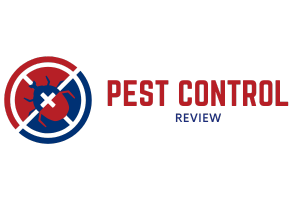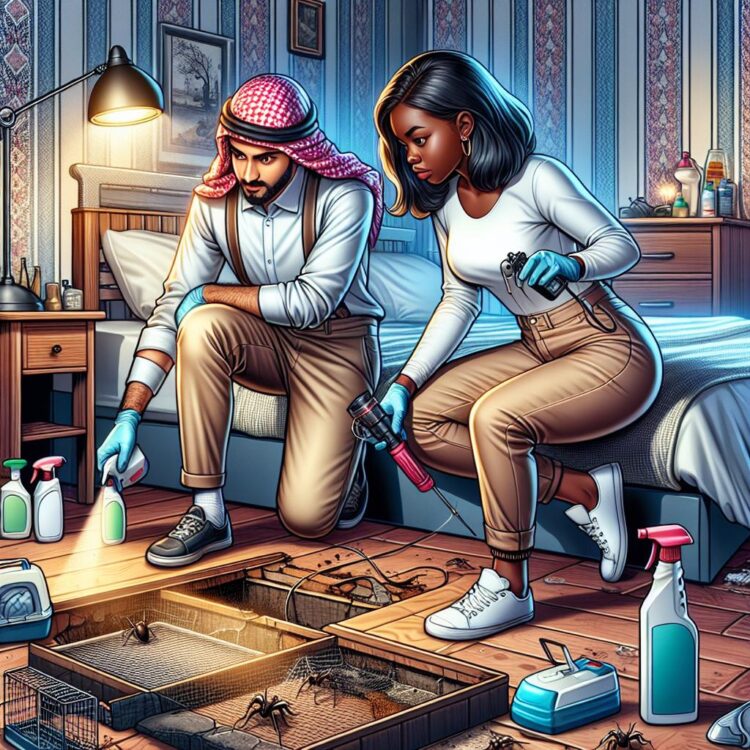Bed bugs and roaches – quite the unwelcome guests, aren’t they? These pesky critters don’t just make your skin crawl; they can seriously impact your home, health, and even your business. Bed bugs, with their itchy bites, can cause sleep loss and discomfort, while roaches, often carrying allergens and diseases, thrive in dirty environments. It’s no wonder controlling these pests is unbelievably important. If you’ve ever found yourself asking how to tackle these issues, you’re not alone. This blog is here to guide you through effective strategies, helping you kick them out for good and enjoy a peaceful, pest-free space.
Understanding and Identifying Bed Bugs and Roaches at Home
Tackling pesky intruders like bed bugs and roaches can be a real hassle, can’t it? But fear not! Understanding these little critters is the first step in evicting them from your home. Bed bugs are small, reddish-brown insects that love to hide in the crevices of mattresses, bed frames, and upholstered furniture. They’re nocturnal and feed on human blood, which is, frankly, rather rude. Roaches, on the other hand, are often found in kitchens and bathrooms due to their preference for warmth and moisture. They’re fast runners and can squeeze through incredibly tiny spaces.So, how can you tell if you’ve got unwanted guests? Look out for signs like itchy bites and spotting rusty stains on bedding for bed bugs. As for roaches, they’re notorious for leaving droppings, producing musty odors, and even causing health risks due to allergens. Spotting these signs early is crucial for a drama-free pest control experience!
The Most Common Issues People Face When Removing Bed Bugs and Roaches
- Structural Damage: Bed bugs and roaches might be small, but if left unchecked, they can cause significant structural damage to your home. Roaches, for instance, can chew through various materials including cardboard, glue, and even some plastics. This may lead to deterioration of your walls, insulation, or any other part of your house they choose to infest. The longer you ignore them, the more havoc they can wreak.
- Health Risks: One of the biggest concerns of having bed bugs and roaches is the health risk they pose. Roaches can trigger allergies and asthma attacks, especially in children. They carry bacteria such as Salmonella and E. coli, which can cause food poisoning if they contaminate your food sources. Bed bugs, while not known to transmit diseases, cause itchy bites, and the scratching might lead to skin infections.
- Food Contamination: It’s unpleasant to think about, but bed bugs and roaches don’t just infest your home; they invade your food too. Roaches are notorious for crawling over food items and spread germs and bacteria, making them unsafe to consume. This can lead to several health issues if contaminated food is ingested.
- Property Devaluation: An infested house is not attractive to potential buyers. Bed bugs and roaches can cause your property to lose value because these pests scream uncleanliness and poor maintenance. The sight of them might repel an interested buyer, perhaps more than any other household issue could.
- Damage to Pets and Gardens: Your furry friends and lovely gardens aren’t immune to these pests. Roaches and bed bugs can cause irritation and discomfort in pets, while gardens, especially vegetable patches, might suffer from pest grazing. Borers and other forms of roaches can attack your garden plants, leading to wilting or the complete destruction of your flora.
Natural & Home Remedies to Banish Bed Bugs and Roaches
- Essential Oils: Essential oils like lavender and tea tree can naturally repel unwanted pests like bed bugs and roaches. Mix a few drops with water in a spray bottle and apply it to areas where pests frequent. Its calming scent is pleasant for us, but a deterrent for them. Plus, it’s non-toxic!
- Vinegar: Vinegar isn’t just for chips! It’s an effective pest repellant too. For bed bugs, shake up a mix of vinegar and water and spritz it around the edges of your bed and furniture. While it won’t kill them, it discourages them from sticking around your dear home.
- Natural Predators: Want to keep it all-natural? Consider introducing natural predators like ladybirds and certain wasps, which can keep cockroach populations under control in gardens without chemical interference. They’re nature’s own pest patrol!
- Herbs: Certain herbs, like mint and bay leaves, emit odors that pests hate. Scatter fresh leaves around problem areas or make sachets with dried ones to place in drawers and cupboards. Not only do they look pretty, but they smell fantastic!
- Traps: Sticky traps made with simple materials like duct tape can help catch roaches. Lay strips sticky-side-up near suspected infested sites and check regularly. It’s a low-cost strategy to monitor and control. So why not give it a go?
- Diatomaceous Earth: This fine white powder is like kryptonite for pests. Sprinkle food-grade diatomaceous earth around bed legs and baseboards to target crawling insects. It’s safe for humans but dries out pesky exoskeletons.
“Effective chemical solutions for eradicating bed bugs and roaches.”
Ready to tackle those pesky bed bugs and roaches? Sometimes, chemical treatments offer the swift solution you need when dealing with these stubborn pests. With various options available, it’s essential to pick the right product for effective results.-
Pyrethroids: These are synthetic chemicals similar to natural insecticides derived from chrysanthemums. Use these on bed frames, mouldings, and cracks where bed bugs hide. Make sure you follow the instructions carefully for safety and effectiveness.
-
Diatomaceous Earth: This powdery substance works by dehydrating pests. Sprinkle it lightly around the perimeters of rooms or directly into the corners where roaches and bed bugs are likely to traverse. Patience is key with this option, as it works best over time.
-
Neonicotinoids: Targeting the nervous system of pests, these are effective against roaches that have built resistance to other insecticides. Apply these meticulously in crevices or areas where roaches frequently scuttle about.
-
Insect Growth Regulators (IGRs): These disrupt the developmental cycle of pests, curbing the population growth. Spray IGRs in areas prone to infestation, making sure to cover surfaces where young bugs might develop.
Prevention Tips: Keeping Bed Bugs and Roaches At Bay
It’s important to stay on top of potential pest problems before they become absolute nightmares. An effective way to ensure your home stays pest-free is by adopting prevention strategies. Here’s a structured list to guide you through:- Proper Waste Disposal and Cleanliness: Keep your home tidy and dispose of rubbish regularly. Pests like rodents and cockroaches are attracted to leftover food and rubbish bins.
- Sealing Entry Points and Cracks: Regularly inspect your home for cracks and holes that might serve as entry points for pests. Use caulk or other appropriate materials to seal them.
- Using Pest Deterrents: Install screens on windows and doors to prevent pests from entering. Consider using natural deterrents like essential oils or herbs, which can be effective and non-toxic.
- Regular Inspections and Maintenance: Schedule regular inspections for signs of pests. Look for droppings, nest materials, or unusual smells. If needed, consult professional pest control services for a thorough check.
- Garden Maintenance: Keep your garden neat and remove any debris, as these can attract pests. Trim trees and bushes to keep them from touching your house, preventing easy access to pests.
- Proper Food Storage: Store food items in airtight containers to keep them safe from pests. Ensure your pantry is clean and free of crumbs.
- Check for Leaks: Fix any leaks promptly, as moisture can attract pests like termites and mould-producing insects.
- Pet Care: If you have pets, make sure their bowls are clean and food is not left out for too long, as this can attract pests like ants or flies.
Busting Myths: Effective Bed Bug and Roach Control Truths
| Myth | Fact |
| Bed bugs and roaches only infest dirty homes. | Both pests can invade even the cleanest homes, as they seek warmth, food, and shelter. |
| DIY remedies like vinegar or lemon juice will eliminate infestations. | While these may repel pests temporarily, they rarely solve infestations. Professional treatments are more effective. |
| Bed bugs and roaches are only active at night. | Though more active at night, both pests can be seen during the day, especially if their numbers grow. |
| One treatment is enough to get rid of all pests. | Pests often require a series of treatments over time to ensure all life stages, including eggs, are eradicated. |
| Throwing away infested furniture solves the problem. | Pests can hide in small cracks, not just furniture. Comprehensive pest control measures are necessary. |















